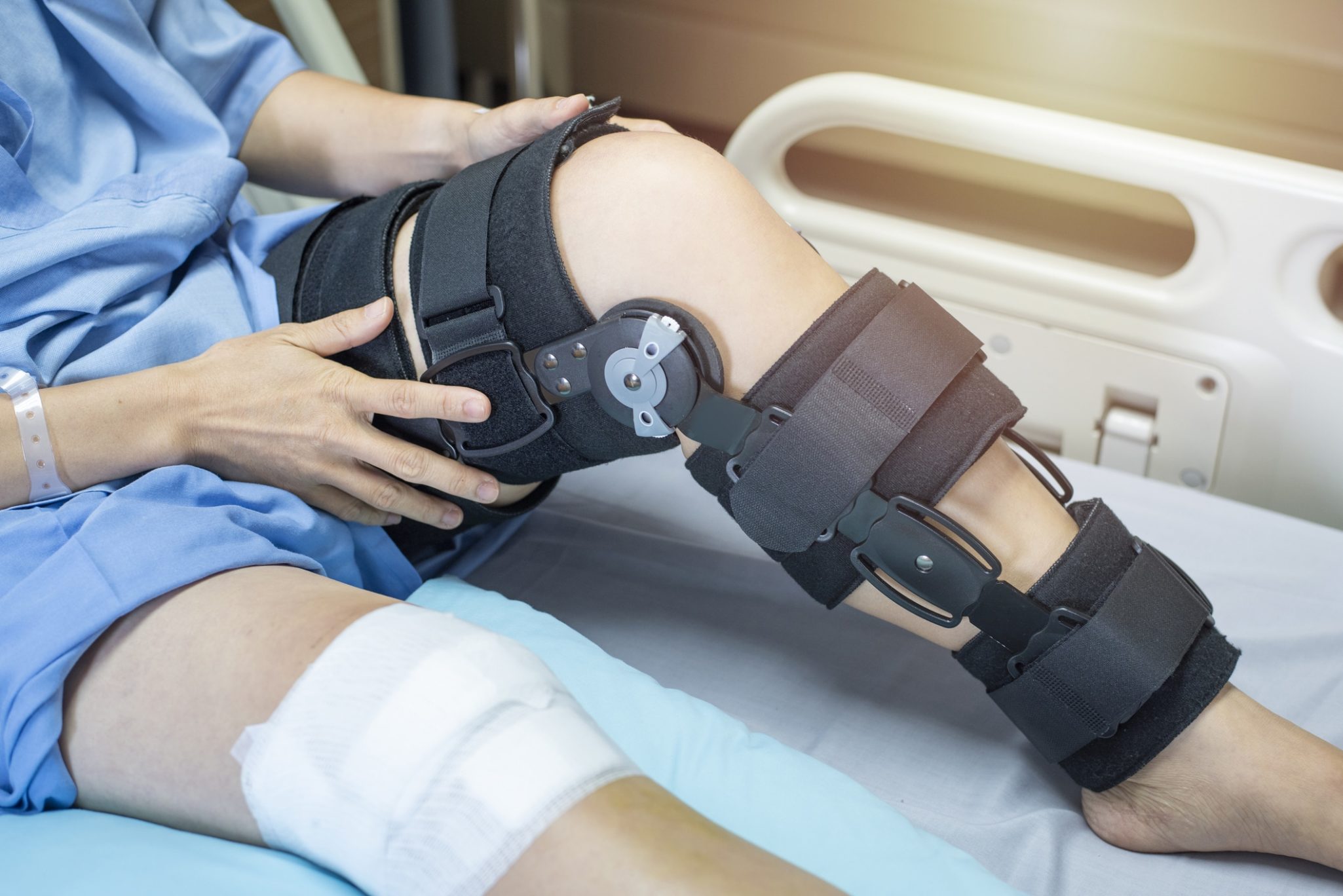What is the Anterior Cruciate Ligament (ACL)?
The anterior cruciate ligament, commonly known as the ACL, is one of the most commonly injured ligaments in the knee. Running diagonally through the middle of the joint, the ACL works together with three other ligaments to connect the femur (thigh bone) to the tibia (the larger of the two lower leg bones). A tearing of this ligament causes the knee to become unstable and the joint to slide forward.

ACL injuries occur most often in athletes as a result of direct contact or an awkward fall. About half of all ACL injuries are also accompanied by damage to the meniscus, cartilage, bone or other ligaments in the knee.
Causes of an ACL Injury
The ACL ligament most frequently tears as a result of a sudden turn or change of direction that causes the knee to twist or hyperextend. Such an injury most often occurs in sports that involve abrupt stops and changes in direction, such as tennis, football, soccer and basketball. It may also occur as a result of an automobile or skiing accident. Many ACL ligament tears also result from commonplace accidents like falling off a ladder or missing a step on a staircase.
Risk Factors for an ACLInjury
Women are more likely to experience an ACL tear than men, even when they are engaging in the same activities. This is because women have a strength imbalance in their thighs, with the quadriceps, the muscles at the front of the thigh, being more powerful than the hamstrings, the muscles at the back.
Symptoms of an ACL Injury
Signs of an ACL injury are difficult to ignore. These signs include:
- Popping sound as the ligament tears
- Immediate pain, swelling and instability
- Increasing swelling and pain following the injury
- Limited range of motion of the knee
- Tenderness at the site
- Inability to walk
Patients who are suspected of having ACL injuries should obtain medical attention immediately to avoid further joint damage.
What Our Patients Have to Say
"Wonderful staff. Wait time is minimal. Diagnosed my problem quickly and helped ease the pain. I highly recommend this group!!"
Diagnosis of an ACL Injury
A physical examination for an ACL injury includes evaluation of swelling and tenderness, especially in comparison to the unaffected knee. It also involves moving the knee into different positions to assess possible ACL damage. For a definitive diagnosis of an ACL tear, imaging tests, including X-rays, ultrasound, MRI and CT scans, are administered so that the internal structure of the knee can be visualized.
Treatment for an ACL Injury
Patients who suffer ACL injuries must use crutches and possibly knee braces during the early stages of recovery. Depending on the severity of the injury, surgery may or may not be necessary. While not all ACL injuries require surgery, leaving the ligament torn or damaged puts the patient at risk for recurring episodes of knee instability. It may also increase the likelihood of developing tissue damage or arthritis over time. For athletes who want to return to high-risk sports, surgical reconstruction is always necessary.
Ligament tears cannot be repaired by simple reattachment. Normally grafting of part of another ligament, usually taken from the patient's knee or hamstring muscle, will be used in the procedure. At times, the graft may be taken from a deceased donor. Physical rehabilitation is always necessary to restore strength, function and stability to the knee, whether or not the patient undergoes surgery.
Ideal candidates for ACL surgery are individuals who are in overall good health and looking to heal and restore their injured or torn ACLs. Most candidates for ACL injuries are active individuals who want to return back to their respective sports or active lifestyles. ACL surgery is not always necessary to repair an injured ACL, but is most recommended for individuals who are suffering from full ACL tears or those who feel instability within their needs during walking, running, or sports.
For more minor ACL injuries, surgery may not be required. Instead, one or more of the following non-surgical treatment options will be recommended.
Rest, Ice, Compression, and Elevation
Known as the “RICE” regimen, this treatment is common among athletes who experience frequent injuries due to their sports playing. Resting is essential for allowing your body to repair its injury as much as it can on its own. Applying ice or wearing a compression bandage can help reduce swelling and ease discomfort. When it comes to ACL tears, it’s important to keep your legs and feet elevated when possible to keep the pressure off the injury.
Joint Aspiration
This treatment involves the medical removal of fluid from the knee, which can help to relive pain and swelling where the ACL is injured. Joint aspiration can also help improve the range of motion. While your knee may be sore for a few days after treatment, it is still a shorter recovery time than surgery.
Physical Therapy
Physical therapy is the most common non-surgical treatment for healing ACL injuries. Even after surgery, physical therapy is used to help regain strength and improve the muscles around the knee joint. Working with a dedicated therapist who can provide a plan that considers your healing progress and recovery goals can help get your knee back to fully functioning without pain. It’s important to remember, however, that although physical therapy can help improve strength, range of motion, flexibility, stiffness, and pain, it cannot heal a torn ACL.
One of the most important things you can do if you are suffering from an ACL injury is not to make it worse. The following activities can cause more stress on your ACL and should be avoided while you are trying to heal your injury:
- Frequent walking
- Swimming
- Cycling
- Bending and extending your knee
- Running
- Jumping or jumping rope
- High-intensity workouts
Healing your ACL injury requires patience and consistency. Over time, you can work to get your knee back to normal and free from ACL injury pain.
Schedule A Consultation
To learn more about our ACL Injury treatment options, call our office today at 631.689.6698 to schedule a consultation. Orthopedic Associates of Long Island is proud to serve East Setauket, Patchogue, Wading River, and the surrounding areas of Suffolk County, Long Island, NY.


